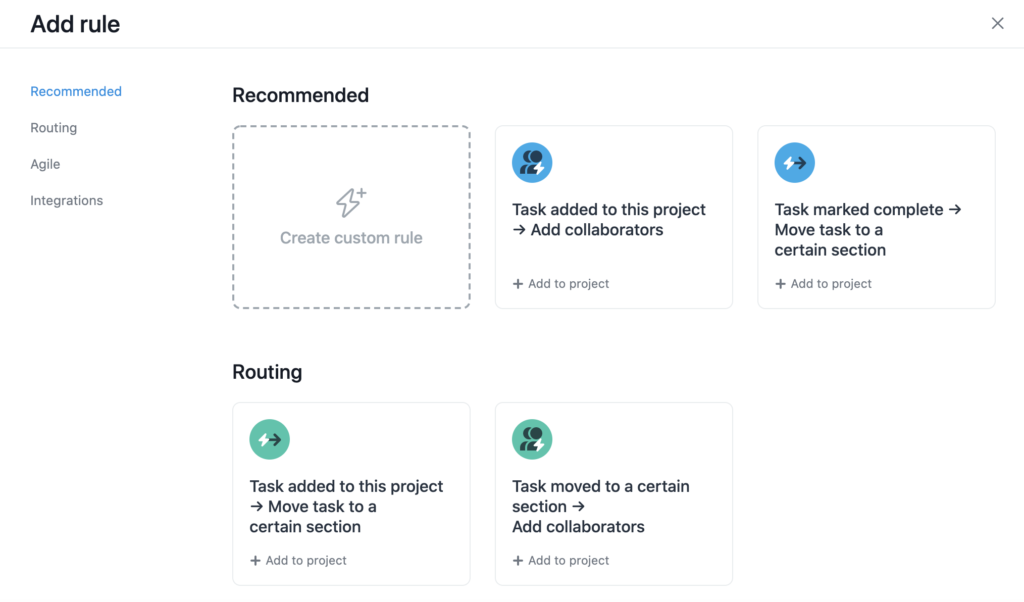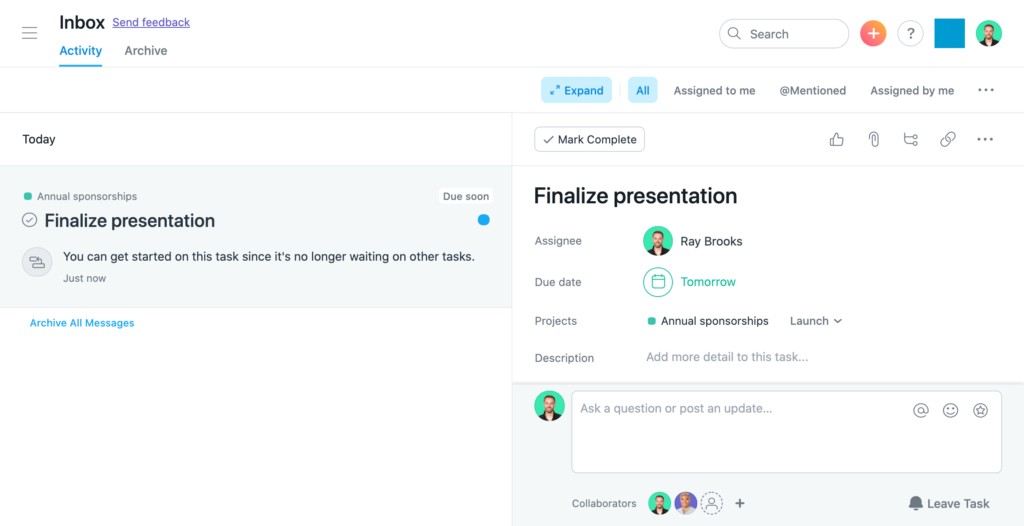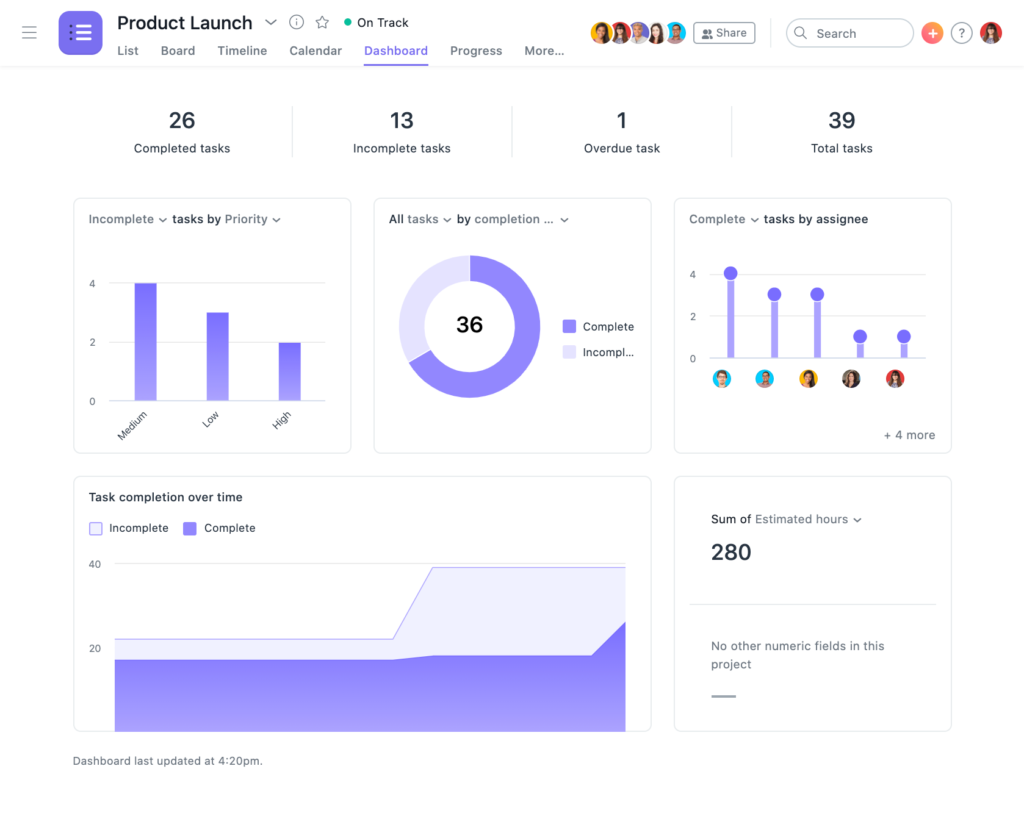Asana tips: 4 ways to reduce manual work

Read this article in French, German, Portuguese, Spanish, or Japanese.
If you had to guess, how much time do you think you spend on manual work? Looking back, it doesn’t alway feel like a lot, because “manual work” can take so many different forms: setting up documents, routing work, creating reports—the list goes on. But manual work is a huge contributor to work about work, the busywork that takes up 60% of every workday. In addition to manual work, work about work includes duplicative work, attending status meetings, tracking down approvals, and more.
As a team lead, reducing manual work isn’t just convenient—it’s a great way to give your team more time for skilled, high-impact work. Instead of chasing approvals and searching for emails, try these four tips to streamline processes and reduce work about work.
1. Jumpstart projects with templates
Getting projects set up and ready for work is a huge time suck, and without the right tools, it’s something that you have to do 100% manually. If you’re regularly using Asana for project management, you’re already a step ahead of the curve. To make getting started on projects even easier, import projects from other tools with our CSV importer. Instead of manually transferring task details, ownership, date, and custom fields, automatically populate the information directly into Asana.
If you’re just getting started with a project, you can also use pre-built Asana templates to get ready-made sections, custom fields, and example tasks. There are over 50 Asana templates to choose from, spanning content calendars to new employee onboarding to meeting agenda templates. Or, if you have a project you’ve created in Asana that you use frequently, you can turn that project into a custom template so you can skip the set-up and get straight to executing on work.
2. Automatically assign work with Rules
Manually triaging and assigning work to the right team member can be really time consuming. Instead of dumping hours of your day into routing tasks, use Rules to automate that work for you.
With Rules, you can set a trigger (or multiple triggers if you’re an Asana Business or Enterprise customer) and an action. For example, you can set a Rule to route a task to a specific team member when a new task is added to a project. Or, you could create a Rule that assigns a task to a specific team member and adds any relevant stakeholders as task collaborators when a created task has a certain custom field.

💡Tip: Asana offers a variety of pre-built Rules to help you automate common tasks, or you can create your own Rules based on your unique project needs.
3. Keep work moving forward with dependencies
Oftentimes, tasks are dependent on other tasks. As a team lead, you might need to review or approve work—but you have to wait until your team members have finished that work. Instead of checking in regularly or adding that to your daily to do list, use dependencies to do that work for you.
With dependencies, you get notified when the task your work is dependent on is either completed or the due date is modified in some way. That way, you can put your task to the side until it’s unblocked, and get notified the moment the work is ready.

4. Get real-time project insights with Dashboards
If you regularly report on project data, there’s a good chance that process is a manual one. Not only does manual reporting take unnecessary time and effort—it can also make it difficult for you to get quick information and details when you need them.
Instead of manually collecting data from individual team members and cobbling it together to understand your project’s health, Dashboards automatically populates charts based on your project data. The five main Dashboards charts are all customizable, so you can slice and dice information in the way that works best for you.

💡Tip: Download any of the Dashboards charts to use in your next email or Status update.
Say goodbye to manual work
Manual work doesn’t have to be a drain on your team. From big, recurring problems to small shortcuts, finding ways to reduce manual work can help your team increase high-impact work. Try these time saving tips and even more features in Asana today.
What’s your favorite way to reduce manual work in Asana? Let us know in the comments!

